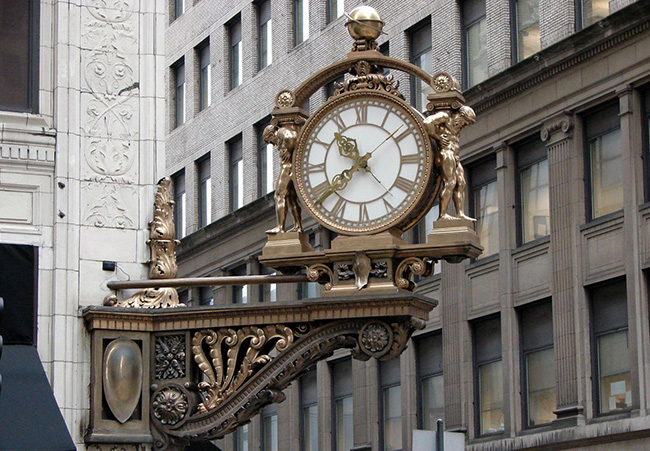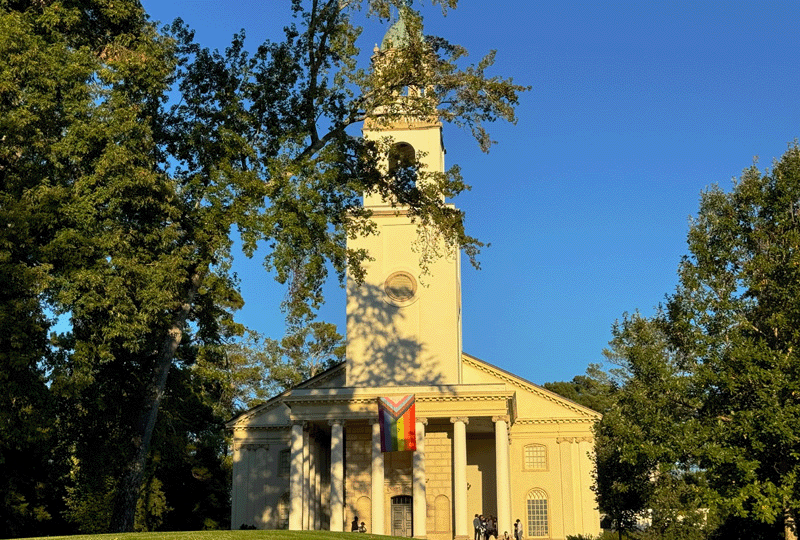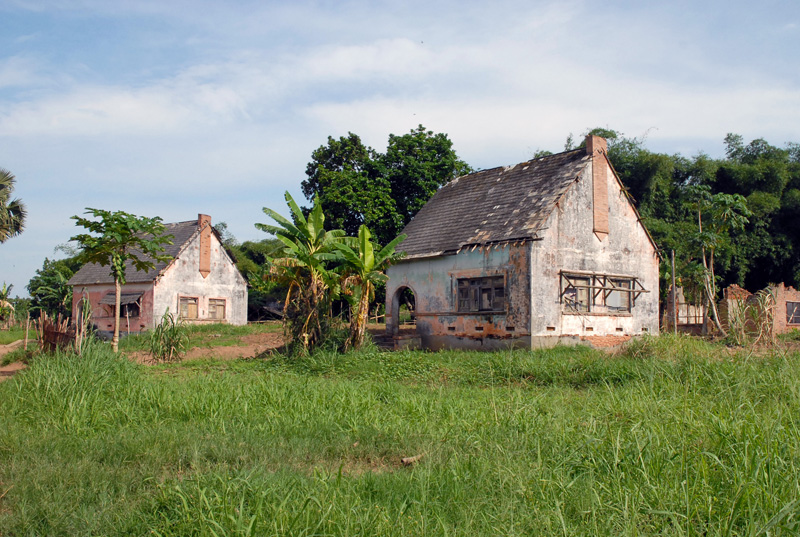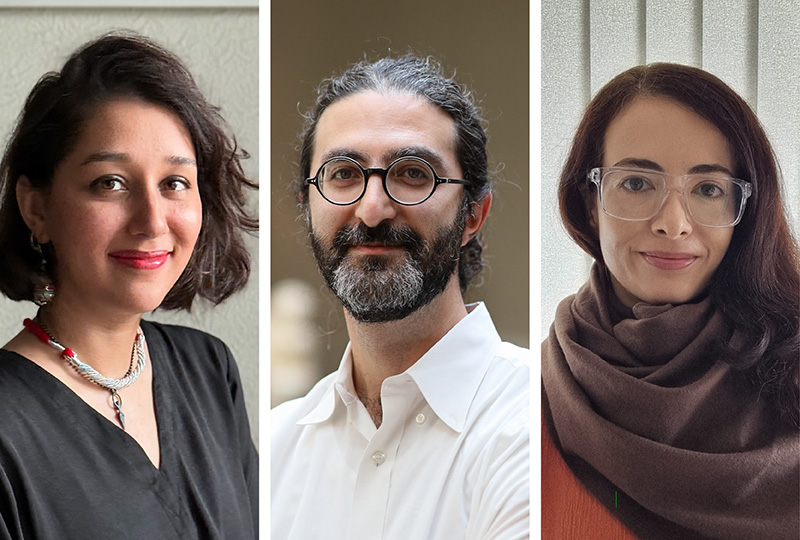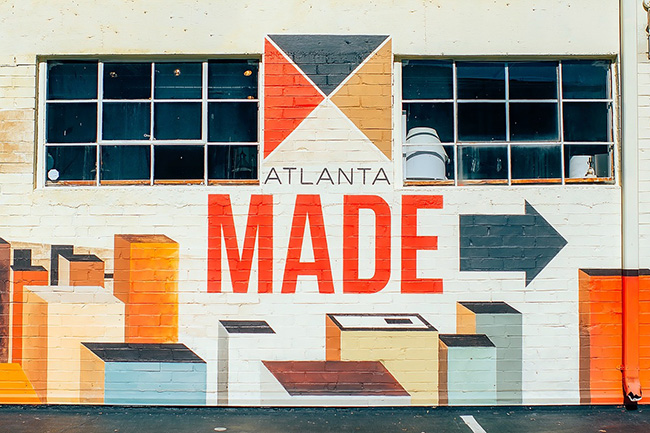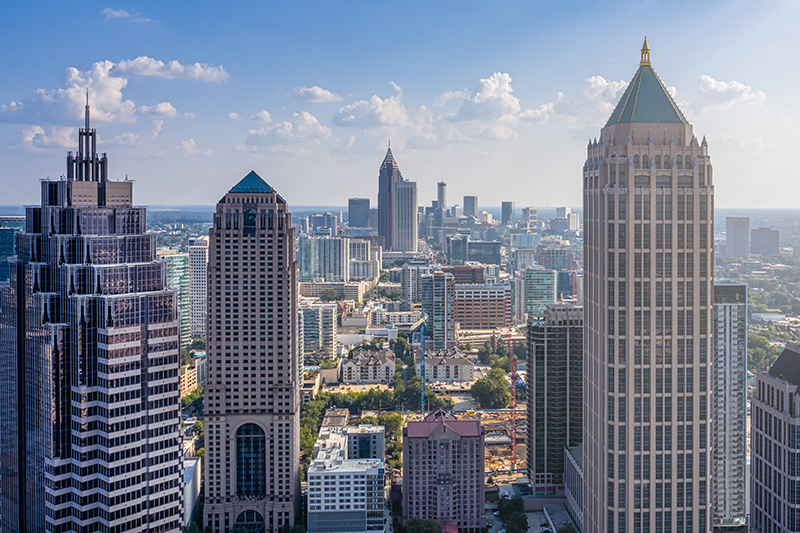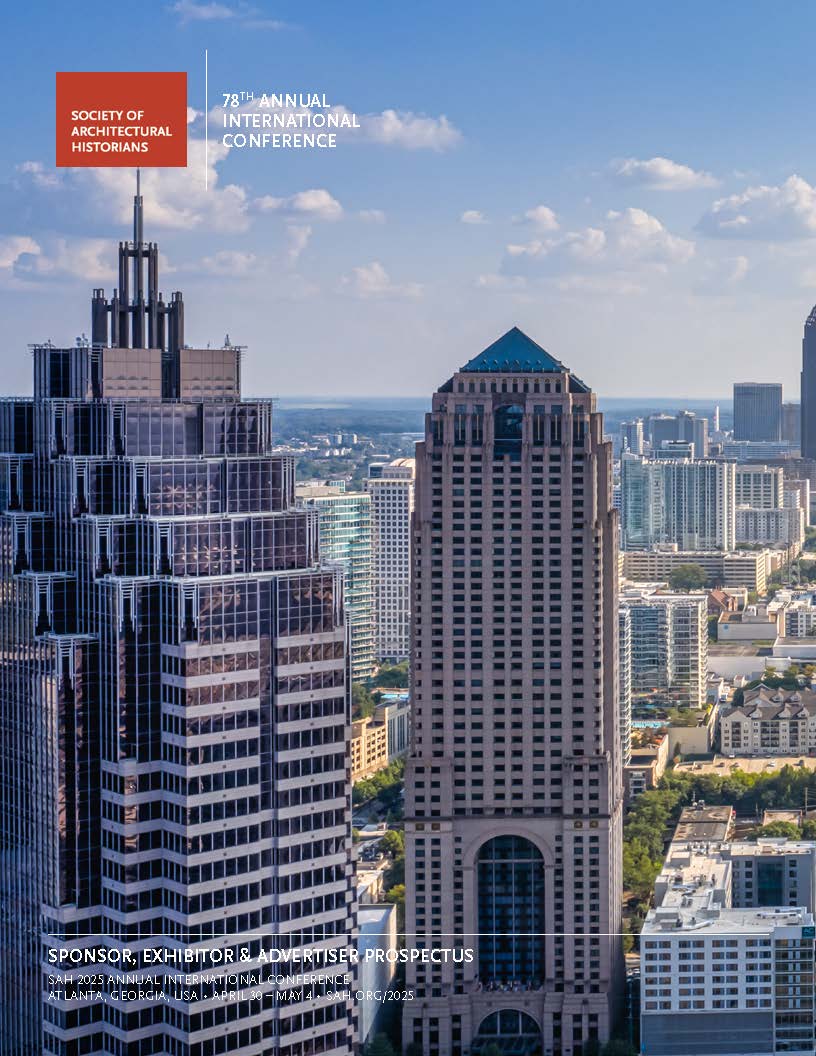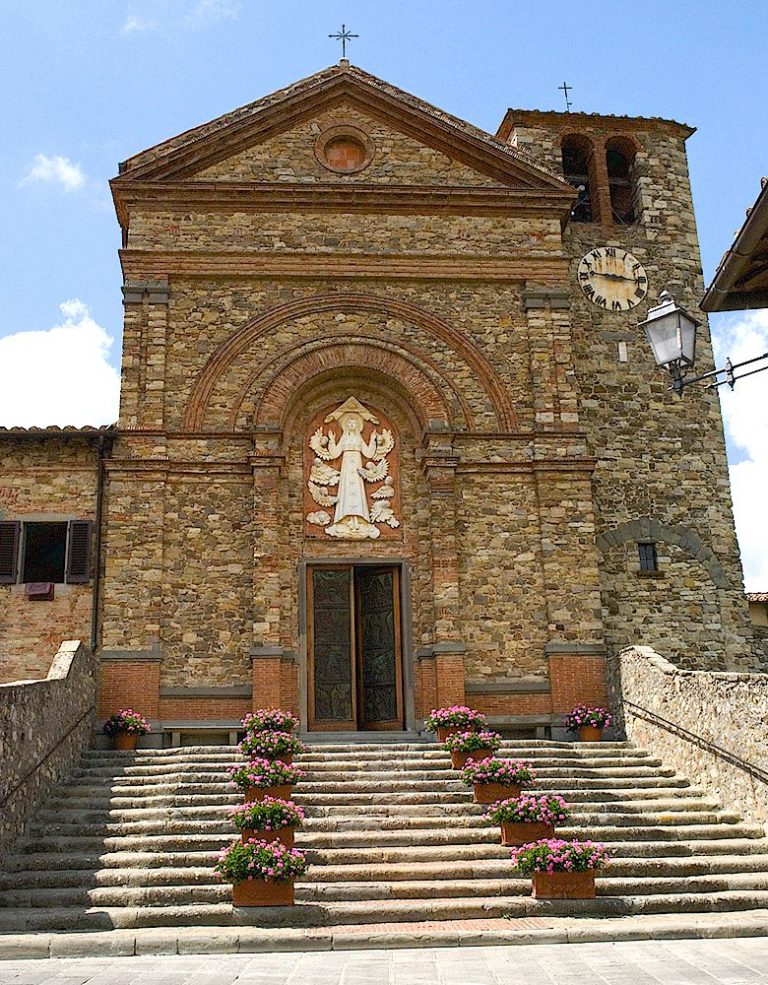-
Membership
Membership
Anyone with an interest in the history of the built environment is welcome to join the Society of Architectural Historians -
Conferences
Conferences
SAH Annual International Conferences bring members together for scholarly exchange and networking -
Publications
Publications
Through print and digital publications, SAH documents the history of the built environment and disseminates scholarship -
Programs
Programs
SAH promotes meaningful engagement with the history of the built environment through its programsMember Programs
-
Jobs & Opportunities
Jobs & Opportunities
SAH provides resources, fellowships, and grants to help further your career and professional life -
Support
Support
We invite you to support the educational mission of SAH by making a gift, becoming a member, or volunteering -
About
About
SAH promotes the study, interpretation, and conservation of the built environment worldwide for the benefit of all
SAH Roundtable Leads to Book Examining Impact of U.S. Confederate Monuments in the Cultural Landscape
Oct 30, 2024
by
SAH News
SAH programs and activities are designed to promote scholarship, connect scholars, and encourage collaborations. A recent publication on Confederate monuments is an example of this type of collaborative work, where an SAH Connects program galvanized the project and inspired the editorial team with a fresh sense of relevance and urgency.
From the start, symbols of colonialism and the Confederacy have often been the focus of public discourse (and rage). Scholars point to research that shows the original intent of monuments to the Confederacy was to reinforce racist ideals, a concept that should be abhorrent to all Americans. While calls to remove Confederate monuments and rename buildings and streets memorializing Confederate leaders are not new, 2020 was a watershed moment. The murder of George Floyd compelled bold protests, and the national debate extended beyond that unjust act sparking conversations about structural racism and white supremacy, and the ways in which they have been (and still are) reinforced in American public spaces.
Responding to the resurgence of public attention to the issue, SAH released a statement in June 2020 supporting the removal of Confederate monuments from public spaces. A month later, the Society’s Heritage Conservation Committee organized a public virtual roundtable, “Removal of Monuments from Public Spaces”.
Attending the program was longtime SAH member Lake Douglas, then-associate dean and professor in the College of Art & Design at Louisiana State University. Joining the stream from his office at the Robert Reich School of Landscape Architecture, he was curious to see the angles from which his peers were approaching the issue.
Remembering the moment, he said: "In [popular media] discussions of these monuments, they always come from a position of race, history, and remembered history. I don't recall too many people talking about the spatial aspect and the urban design aspect of the impact of these monuments."
According to Douglas, the discussion over Zoom that day included a variety of interesting perspectives that offered "much to think about" as he heard positions articulated and rationales for various courses of action.
"Examining the spatial impact leads into discussions of equity; whose space is it, and what stories are being told? And why are they being told?” he said. To answer those questions, you need to see the woven fabric of a place that pulls together threads from many disciplines. Douglas believed there were even more perspectives that could be brought to bear on the subject. "I thought this would make a great book for the Reading the American Landscape series I edit for LSU Press, " he noted.
In parallel, M. Elen Deming, professor and director of the Doctor of Design program at the College of Design at North Carolina State University (NCSU), who was already working on the topic, had also joined the SAH roundtable. Deming’s research interests in the theory and history of landscape representation and the rhetorical values present in landscape design aligned well with the subject.
Deming was working on the topic of Confederate narratives with her NCSU colleague Kofi Boone, Joseph D. Moore distinguished professor and director of NC’s State’s graduate program in landscape architecture. Boone initiated work on Confederate monuments as part of a cultural landscape presentation for The Cultural Landscape Foundation’s Leading with Landscape: Research Triangle in Spring 2018 (hosted by NCSU). That presentation contrasted community responses to confederate monuments in Raleigh, Durham, and Chapel Hill, North Carolina. That sparked Deming and Boone’s ongoing collaboration including academic conference talks and, in 2019, a co-authored article titled “Symbolic Conversations in Public Landscapes of the American South.”
“We decided to tackle the topic because, in the past decade — especially since 2017 — media attention to Confederate monument removals begged for much-needed clarity.” Deming writes. Boone acknowledges, “I was dealing with some ‘landscape blindness.’ As a relocated northerner [from my hometown of Detroit], I really didn't give the monuments and memorials any real attention.” “But,” he continues, “as I got to understand southern communities more, especially smaller rural ones, it became clear that although not spoken about in the open, the artifacts were exerting some power on their communities.”
In March 2019, Deming and Boone organized a panel session on the topic of Confederate monuments called “Symbols of Division: Deploying Narratives and Counter-Narratives in Public Space,“ hosted by the Council of Educators in Landscape Architecture (CELA). As a repeat collaborator of Douglas’, Deming feels the conceptual seeds for a book were planted at that time. However, the project languished for many months until the SAH Roundtable gave it new impetus.
Finally, "the stars aligned, and the project took shape. … the Roundtable stimulated new conversations on content and the addition of potential participants," Douglas said. In fact, two of the SAH Roundtable participants—Dell Upton and Zena Howard—accepted the editors’ invitation to join the book project and made very important contributions.
"We invited an extraordinary group of experts to help us study the problem. With eighteen contributors overall, the book became quite complex, a multi-year project running right through Covid-time," Deming shared. "Some of our authors were historians and geographers; some artists and designers; and some social activists and advocates for inclusive public space. The book would have been impossible without this 'village.'"
 Empty Pedestals: Countering Confederate Narratives through Public Design, was published in June 2024, exactly three years after
the auspicious SAH discussion.
Empty Pedestals: Countering Confederate Narratives through Public Design, was published in June 2024, exactly three years after
the auspicious SAH discussion.
"The end products of such roundtables and collaborations are greater than any individual efforts could be," said Douglas. "Maybe that suggests that there should be more articles or more presentations or more discussions that focus on one thing from different perspectives."
“There is a need to bridge the gap between research and action,” adds Boone. “Finding common ground between academics and practitioners to enable more diverse voices in the conversation would be good. [Any way we can] consider the broader ideas of scholarship and impact as opposed to strictly research could remove some barriers to access for non-academics to participate.”
SAH programming is dedicated to bringing scholars across disciplines together for meaningful interaction. With the support from its community, the Society has connected its members around topics of interest at Meetups, hosted expert-led public fora through the SAH CONNECTS event series, and expanded opportunities to present research at its in-person and virtual conferences.
The author credits SAH’s Statement on Monuments to the Confederacy and its authors for language used to open this article.
Cover image: Detail of Northumberland County Confederate Monument, an obelisk on the courthouse lawn. Heathsville, Virginia, United States. Carved into the stone is an image of two crossed swords with their point of connection wrapped in a shroud. Photo by Dell Upton and submitted to SAHARA.
Row White
Lorem ipsum dolor sit amet, consectetur adipiscing elit, sed do eiusmod tempor incididunt ut labore et dolore magna aliqua. Ut enim ad minim veniam, quis nostrud exercitation ullamco laboris nisi ut aliquip ex ea commodo consequat. Duis aute irure dolor in reprehenderit in voluptate velit esse cillum dolore eu fugiat nulla pariatur. Excepteur sint occaecat cupidatat non proident, sunt in culpa qui officia deserunt mollit anim id est laborum.
Row BG Green
Lorem ipsum dolor sit amet, consectetur adipiscing elit, sed do eiusmod tempor incididunt ut labore et dolore magna aliqua. Ut enim ad minim veniam, quis nostrud exercitation ullamco laboris nisi ut aliquip ex ea commodo consequat. Duis aute irure dolor in reprehenderit in voluptate velit esse cillum dolore eu fugiat nulla pariatur. Excepteur sint occaecat cupidatat non proident, sunt in culpa qui officia deserunt mollit anim id est laborum.
Row Gray
Lorem ipsum dolor sit amet, consectetur adipiscing elit, sed do eiusmod tempor incididunt ut labore et dolore magna aliqua. Ut enim ad minim veniam, quis nostrud exercitation ullamco laboris nisi ut aliquip ex ea commodo consequat. Duis aute irure dolor in reprehenderit in voluptate velit esse cillum dolore eu fugiat nulla pariatur. Excepteur sint occaecat cupidatat non proident, sunt in culpa qui officia deserunt mollit anim id est laborum.
Row Green
Lorem ipsum dolor sit amet, consectetur adipiscing elit, sed do eiusmod tempor incididunt ut labore et dolore magna aliqua. Ut enim ad minim veniam, quis nostrud exercitation ullamco laboris nisi ut aliquip ex ea commodo consequat. Duis aute irure dolor in reprehenderit in voluptate velit esse cillum dolore eu fugiat nulla pariatur. Excepteur sint occaecat cupidatat non proident, sunt in culpa qui officia deserunt mollit anim id est laborum.
Row CP Dark
Lorem ipsum dolor sit amet, consectetur adipiscing elit, sed do eiusmod tempor incididunt ut labore et dolore magna aliqua. Ut enim ad minim veniam, quis nostrud exercitation ullamco laboris nisi ut aliquip ex ea commodo consequat. Duis aute irure dolor in reprehenderit in voluptate velit esse cillum dolore eu fugiat nulla pariatur. Excepteur sint occaecat cupidatat non proident, sunt in culpa qui officia deserunt mollit anim id est laborum.
Heading 1
Lorem ipsum dolor sit amet, consectetur adipiscing elit, sed do eiusmod tempor incididunt ut labore et dolore magna aliqua. Ut enim ad minim veniam, quis nostrud exercitation ullamco laboris nisi ut aliquip ex ea commodo consequat. Duis aute irure dolor in reprehenderit in voluptate velit esse cillum dolore eu fugiat nulla pariatur. Excepteur sint occaecat cupidatat non proident, sunt in culpa qui officia deserunt mollit anim id est laborum.
Heading 2
Lorem ipsum dolor sit amet, consectetur adipiscing elit, sed do eiusmod tempor incididunt ut labore et dolore magna aliqua. Ut enim ad minim veniam, quis nostrud exercitation ullamco laboris nisi ut aliquip ex ea commodo consequat. Duis aute irure dolor in reprehenderit in voluptate velit esse cillum dolore eu fugiat nulla pariatur. Excepteur sint occaecat cupidatat non proident, sunt in culpa qui officia deserunt mollit anim id est laborum.
Heading 3
Lorem ipsum dolor sit amet, consectetur adipiscing elit, sed do eiusmod tempor incididunt ut labore et dolore magna aliqua. Ut enim ad minim veniam, quis nostrud exercitation ullamco laboris nisi ut aliquip ex ea commodo consequat. Duis aute irure dolor in reprehenderit in voluptate velit esse cillum dolore eu fugiat nulla pariatur. Excepteur sint occaecat cupidatat non proident, sunt in culpa qui officia deserunt mollit anim id est laborum.
Heading 4
Lorem ipsum dolor sit amet, consectetur adipiscing elit, sed do eiusmod tempor incididunt ut labore et dolore magna aliqua. Ut enim ad minim veniam, quis nostrud exercitation ullamco laboris nisi ut aliquip ex ea commodo consequat. Duis aute irure dolor in reprehenderit in voluptate velit esse cillum dolore eu fugiat nulla pariatur. Excepteur sint occaecat cupidatat non proident, sunt in culpa qui officia deserunt mollit anim id est laborum.
Heading 5
Lorem ipsum dolor sit amet, consectetur adipiscing elit, sed do eiusmod tempor incididunt ut labore et dolore magna aliqua. Ut enim ad minim veniam, quis nostrud exercitation ullamco laboris nisi ut aliquip ex ea commodo consequat. Duis aute irure dolor in reprehenderit in voluptate velit esse cillum dolore eu fugiat nulla pariatur. Excepteur sint occaecat cupidatat non proident, sunt in culpa qui officia deserunt mollit anim id est laborum.
Heading 6
Lorem ipsum dolor sit amet, consectetur adipiscing elit, sed do eiusmod tempor incididunt ut labore et dolore magna aliqua. Ut enim ad minim veniam, quis nostrud exercitation ullamco laboris nisi ut aliquip ex ea commodo consequat. Duis aute irure dolor in reprehenderit in voluptate velit esse cillum dolore eu fugiat nulla pariatur. Excepteur sint occaecat cupidatat non proident, sunt in culpa qui officia deserunt mollit anim id est laborum.
lead
Blockquote: Lorem ipsum dolor sit amet, consectetur adipiscing elit, sed do eiusmod tempor incididunt ut labore et dolore magna aliqua. Ut enim ad minim veniam, quis nostrud exercitation ullamco laboris nisi ut aliquip ex ea commodo consequat. Duis aute irure dolor in reprehenderit in voluptate velit esse cillum dolore eu fugiat nulla pariatur. Excepteur sint occaecat cupidatat non proident, sunt in culpa qui officia deserunt mollit anim id est laborum.
- List Item
- List Item
- List Item
- List Item
- List Item
- List Item
Two Buttons in one paragraph
Expandable List
At the center of SAH Celebrates is the Charnley-Persky House (1891–1892), a National Historic Landmark and a Chicago Landmark designed by Louis Sullivan with assistance from Frank Lloyd Wright, that serves as SAH headquarters. SAH Celebrates highlights the importance of fostering a supportive community whose efforts ensure the stewardship of architectural gems like the Charnley-Persky House.
Proceeds benefit the ongoing maintenance and care of the Charnley-Persky House and SAH's educational programs and publications, including SAH Archipedia and Buildings of the United States.
T. Gunny Harboe, FAIA
Founder, Harboe Architects
Michelangelo Sabatino, PhD
Professor, Director of Ph.D. Program in Architecture, Inaugural John Vinci Distinguished Research Fellow, Illinois Institute of Technology
Founder, Harboe Architects
Michelangelo Sabatino, PhD
Professor, Director of Ph.D. Program in Architecture, Inaugural John Vinci Distinguished Research Fellow, Illinois Institute of Technology
Laurence O. Booth, FAIA
Booth Hansen Architects
Rebekah Coffman
Chicago History Museum
Stuart Cohen, FAIA
Cohen-Hacker Architects
Thomas M. Dietz
Alison Fisher
Art Institute of Chicago
Scott Fortman
Institute of Classical Architecture and Art, Chicago-Midwest Chapter
Keith Goad
The Keith Goad Group, Berkshire Hathaway Home Services Chicago
Chandra Goldsmith
IIT CoA Board of Advisors
Barbara Gordon
Frank Lloyd Wright Building Conservancy
Eleanor Gorski
Chicago Architecture Center
Stuart Graff
Frank Lloyd Wright Foundation
Julie Hacker, FAIA
Cohen-Hacker Architects
Sarah Herda
Graham Foundation
Harry Hunderman, FAIA
Wiss, Janney, Elstner Associates, Inc
Lisa Key
Driehaus Museum
Nancy and Thomas Klein
SAH Chicago Chapter
Thomas Leslie
University of Illinois at Urbana-Champaign
Jen Masengarb
AIA Chicago
Bonnie McDonald
Landmarks Illinois
Justin Miller
Docomomo US/Chicago
Ward Miller
Preservation Chicago
Heather Hyde Minor
University of Notre Dame
Keith N. Morgan, FSAH
SAH Past President
Sarah Rogers Morris
University of Illinois at Chicago
John K. Notz Jr.
SAH Benefactor Member
Keith Olsen
Olsen Vranas Architects
Abby Persky
Chicago, IL
Laurie Petersen
Charnley-Persky House Board Member
Charlie Pipal
School of the Art Institute of Chicago
Deborah Slaton
Wiss, Janney, Elstner Assocites, Inc.
Cynthia Vranas
Mies Van der Rohe Society
Cynthia Weese, FAIA
Weese, Langley, Weese Architects and Charnley-Persky House Board Member
Ernie Wong
Commission on Chicago Landmarks
Booth Hansen Architects
Rebekah Coffman
Chicago History Museum
Stuart Cohen, FAIA
Cohen-Hacker Architects
Thomas M. Dietz
Jaeger Nickola Kuhlman & Associates
Art Institute of Chicago
Scott Fortman
Institute of Classical Architecture and Art, Chicago-Midwest Chapter
Keith Goad
The Keith Goad Group, Berkshire Hathaway Home Services Chicago
Chandra Goldsmith
IIT CoA Board of Advisors
Barbara Gordon
Frank Lloyd Wright Building Conservancy
Eleanor Gorski
Chicago Architecture Center
Stuart Graff
Frank Lloyd Wright Foundation
Julie Hacker, FAIA
Cohen-Hacker Architects
Sarah Herda
Graham Foundation
Harry Hunderman, FAIA
Wiss, Janney, Elstner Associates, Inc
Lisa Key
Driehaus Museum
Nancy and Thomas Klein
SAH Chicago Chapter
Thomas Leslie
University of Illinois at Urbana-Champaign
Jen Masengarb
AIA Chicago
Bonnie McDonald
Landmarks Illinois
Justin Miller
Docomomo US/Chicago
Ward Miller
Preservation Chicago
Heather Hyde Minor
University of Notre Dame
Keith N. Morgan, FSAH
SAH Past President
Sarah Rogers Morris
University of Illinois at Chicago
John K. Notz Jr.
SAH Benefactor Member
Keith Olsen
Olsen Vranas Architects
Abby Persky
Chicago, IL
Laurie Petersen
Charnley-Persky House Board Member
Charlie Pipal
School of the Art Institute of Chicago
Deborah Slaton
Wiss, Janney, Elstner Assocites, Inc.
Chris-Annmarie Spencer, AIA, NOMA
AIA Chicago Foundation
Cynthia Vranas
Mies Van der Rohe Society
Cynthia Weese, FAIA
Weese, Langley, Weese Architects and Charnley-Persky House Board Member
Ernie Wong
Commission on Chicago Landmarks
Download the prospectus for information about sponsorship and advertising opportunities. Please contact Ben Thomas at 312-573-1365 if you have questions.
Category Dropdown
OOTB Cards
Card
Card.Alt

Card Title
Card Text - Lorem ipsum dolor sit amet, consectetur adipiscing elit, sed do eiusmod tempor incididunt ut labore et dolore magna aliqua.

Card Title
Card Text - Lorem ipsum dolor sit amet, consectetur adipiscing elit, sed do eiusmod tempor incididunt ut labore et dolore magna aliqua.

Card Title
Card Text - Lorem ipsum dolor sit amet, consectetur adipiscing elit, sed do eiusmod tempor incididunt ut labore et dolore magna aliqua.
Card.Simple

Card Title
Card Text - Lorem ipsum dolor sit amet, consectetur adipiscing elit, sed do eiusmod tempor incididunt ut labore et dolore magna aliqua.
Card.Hero
Card Title
Card Text - Lorem ipsum dolor sit amet, consectetur adipiscing elit, sed do eiusmod tempor incididunt ut labore et dolore magna aliqua.

Card Title
Card Text - Lorem ipsum dolor sit amet, consectetur adipiscing elit, sed do eiusmod tempor incididunt ut labore et dolore magna aliqua.
Card Title
Card Text - Lorem ipsum dolor sit amet, consectetur adipiscing elit, sed do eiusmod tempor incididunt ut labore et dolore magna aliqua.

Card Title
Card Text - Lorem ipsum dolor sit amet, consectetur adipiscing elit, sed do eiusmod tempor incididunt ut labore et dolore magna aliqua.
Card ButtonCustom Cards
List.Custom Card
List.Custom Card 2 Column
List.Custom Card 3 Column
List.Custom Card 4 Column
Detail.Card
Detail.Card Alt
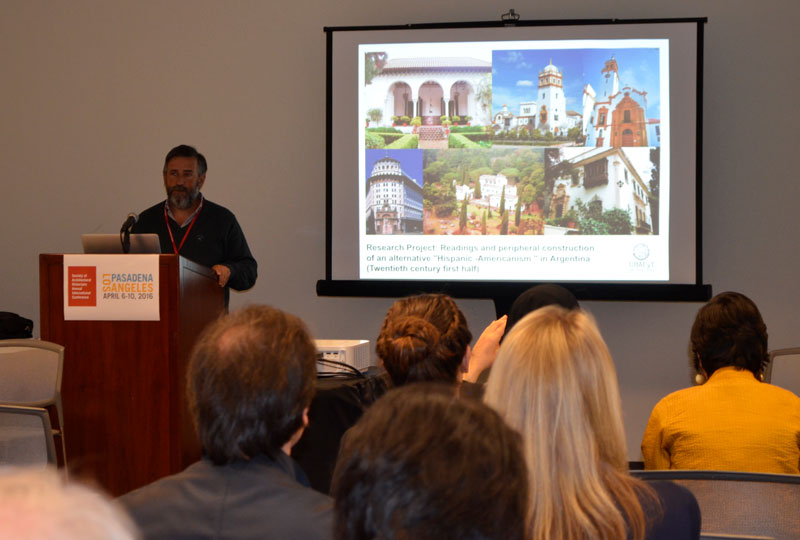
Annual Conference Fellowships
Conference fellowships support session chairs and speakers participating in the SAH Annual International Conference.
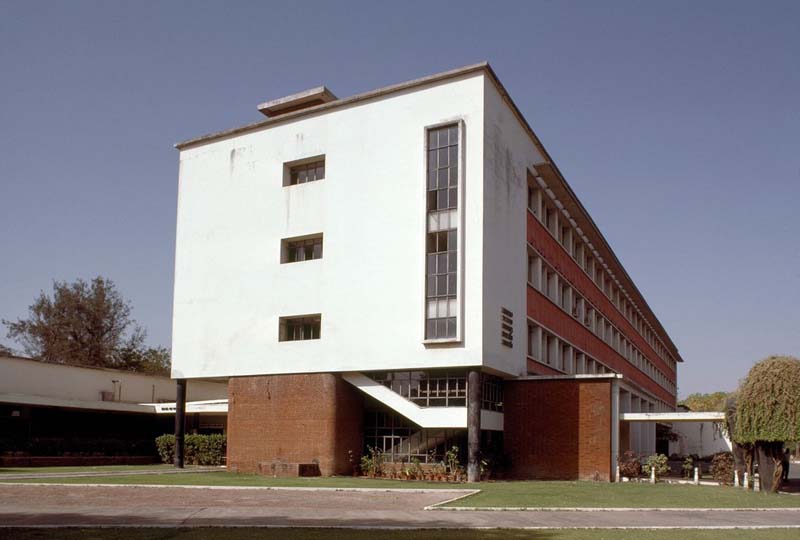

Detail.Card Simple
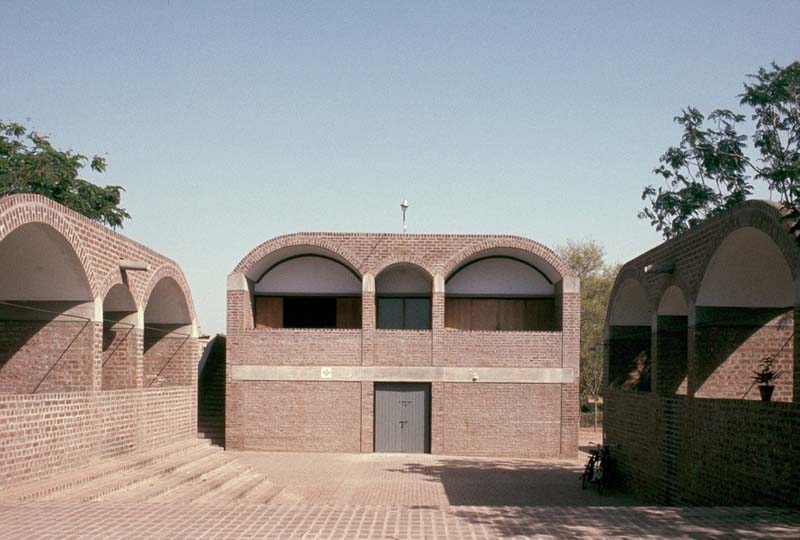
Another Card Title With Extra Text
This is a card summary. Has a limit of 255 characters. We can increase that if you think we need more text.
Detail.Card Hero


Content Types
Blogs
Blog List
Events
Events List
Events Home Blocks
News
News List
SAH Roundtable Leads to Book Examining Impact of U.S. Confederate Monuments in the Cultural Landscape
Oct 30, 2024
by
SAH News
SAH programs and activities are designed to promote scholarship, connect scholars, and encourage collaborations. A recent publication on Confederate monuments is an example of this type of collaborative work, where an SAH Connects program galvanized the project and inspired the editorial team with a fresh sense of relevance and urgency.
From the start, symbols of colonialism and the Confederacy have often been the focus of public discourse (and rage). Scholars point to research that shows the original intent of monuments to the Confederacy was to reinforce racist ideals, a concept that should be abhorrent to all Americans. While calls to remove Confederate monuments and rename buildings and streets memorializing Confederate leaders are not new, 2020 was a watershed moment. The murder of George Floyd compelled bold protests, and the national debate extended beyond that unjust act sparking conversations about structural racism and white supremacy, and the ways in which they have been (and still are) reinforced in American public spaces.
Responding to the resurgence of public attention to the issue, SAH released a statement in June 2020 supporting the removal of Confederate monuments from public spaces. A month later, the Society’s Heritage Conservation Committee organized a public virtual roundtable, “Removal of Monuments from Public Spaces”.
Attending the program was longtime SAH member Lake Douglas, then-associate dean and professor in the College of Art & Design at Louisiana State University. Joining the stream from his office at the Robert Reich School of Landscape Architecture, he was curious to see the angles from which his peers were approaching the issue.
Remembering the moment, he said: "In [popular media] discussions of these monuments, they always come from a position of race, history, and remembered history. I don't recall too many people talking about the spatial aspect and the urban design aspect of the impact of these monuments."
According to Douglas, the discussion over Zoom that day included a variety of interesting perspectives that offered "much to think about" as he heard positions articulated and rationales for various courses of action.
"Examining the spatial impact leads into discussions of equity; whose space is it, and what stories are being told? And why are they being told?” he said. To answer those questions, you need to see the woven fabric of a place that pulls together threads from many disciplines. Douglas believed there were even more perspectives that could be brought to bear on the subject. "I thought this would make a great book for the Reading the American Landscape series I edit for LSU Press, " he noted.
In parallel, M. Elen Deming, professor and director of the Doctor of Design program at the College of Design at North Carolina State University (NCSU), who was already working on the topic, had also joined the SAH roundtable. Deming’s research interests in the theory and history of landscape representation and the rhetorical values present in landscape design aligned well with the subject.
Deming was working on the topic of Confederate narratives with her NCSU colleague Kofi Boone, Joseph D. Moore distinguished professor and director of NC’s State’s graduate program in landscape architecture. Boone initiated work on Confederate monuments as part of a cultural landscape presentation for The Cultural Landscape Foundation’s Leading with Landscape: Research Triangle in Spring 2018 (hosted by NCSU). That presentation contrasted community responses to confederate monuments in Raleigh, Durham, and Chapel Hill, North Carolina. That sparked Deming and Boone’s ongoing collaboration including academic conference talks and, in 2019, a co-authored article titled “Symbolic Conversations in Public Landscapes of the American South.”
“We decided to tackle the topic because, in the past decade — especially since 2017 — media attention to Confederate monument removals begged for much-needed clarity.” Deming writes. Boone acknowledges, “I was dealing with some ‘landscape blindness.’ As a relocated northerner [from my hometown of Detroit], I really didn't give the monuments and memorials any real attention.” “But,” he continues, “as I got to understand southern communities more, especially smaller rural ones, it became clear that although not spoken about in the open, the artifacts were exerting some power on their communities.”
In March 2019, Deming and Boone organized a panel session on the topic of Confederate monuments called “Symbols of Division: Deploying Narratives and Counter-Narratives in Public Space,“ hosted by the Council of Educators in Landscape Architecture (CELA). As a repeat collaborator of Douglas’, Deming feels the conceptual seeds for a book were planted at that time. However, the project languished for many months until the SAH Roundtable gave it new impetus.
Finally, "the stars aligned, and the project took shape. … the Roundtable stimulated new conversations on content and the addition of potential participants," Douglas said. In fact, two of the SAH Roundtable participants—Dell Upton and Zena Howard—accepted the editors’ invitation to join the book project and made very important contributions.
"We invited an extraordinary group of experts to help us study the problem. With eighteen contributors overall, the book became quite complex, a multi-year project running right through Covid-time," Deming shared. "Some of our authors were historians and geographers; some artists and designers; and some social activists and advocates for inclusive public space. The book would have been impossible without this 'village.'"
 Empty Pedestals: Countering Confederate Narratives through Public Design, was published in June 2024, exactly three years after
the auspicious SAH discussion.
Empty Pedestals: Countering Confederate Narratives through Public Design, was published in June 2024, exactly three years after
the auspicious SAH discussion.
"The end products of such roundtables and collaborations are greater than any individual efforts could be," said Douglas. "Maybe that suggests that there should be more articles or more presentations or more discussions that focus on one thing from different perspectives."
“There is a need to bridge the gap between research and action,” adds Boone. “Finding common ground between academics and practitioners to enable more diverse voices in the conversation would be good. [Any way we can] consider the broader ideas of scholarship and impact as opposed to strictly research could remove some barriers to access for non-academics to participate.”
SAH programming is dedicated to bringing scholars across disciplines together for meaningful interaction. With the support from its community, the Society has connected its members around topics of interest at Meetups, hosted expert-led public fora through the SAH CONNECTS event series, and expanded opportunities to present research at its in-person and virtual conferences.
The author credits SAH’s Statement on Monuments to the Confederacy and its authors for language used to open this article.
Cover image: Detail of Northumberland County Confederate Monument, an obelisk on the courthouse lawn. Heathsville, Virginia, United States. Carved into the stone is an image of two crossed swords with their point of connection wrapped in a shroud. Photo by Dell Upton and submitted to SAHARA.
News Home Blocks
SAH Roundtable Leads to Book Examining Impact of U.S. Confederate Monuments in the Cultural Landscape
Oct 30, 2024
by
SAH News
SAH programs and activities are designed to promote scholarship, connect scholars, and encourage collaborations. A recent publication on Confederate monuments is an example of this type of collaborative work, where an SAH Connects program galvanized the project and inspired the editorial team with a fresh sense of relevance and urgency.
From the start, symbols of colonialism and the Confederacy have often been the focus of public discourse (and rage). Scholars point to research that shows the original intent of monuments to the Confederacy was to reinforce racist ideals, a concept that should be abhorrent to all Americans. While calls to remove Confederate monuments and rename buildings and streets memorializing Confederate leaders are not new, 2020 was a watershed moment. The murder of George Floyd compelled bold protests, and the national debate extended beyond that unjust act sparking conversations about structural racism and white supremacy, and the ways in which they have been (and still are) reinforced in American public spaces.
Responding to the resurgence of public attention to the issue, SAH released a statement in June 2020 supporting the removal of Confederate monuments from public spaces. A month later, the Society’s Heritage Conservation Committee organized a public virtual roundtable, “Removal of Monuments from Public Spaces”.
Attending the program was longtime SAH member Lake Douglas, then-associate dean and professor in the College of Art & Design at Louisiana State University. Joining the stream from his office at the Robert Reich School of Landscape Architecture, he was curious to see the angles from which his peers were approaching the issue.
Remembering the moment, he said: "In [popular media] discussions of these monuments, they always come from a position of race, history, and remembered history. I don't recall too many people talking about the spatial aspect and the urban design aspect of the impact of these monuments."
According to Douglas, the discussion over Zoom that day included a variety of interesting perspectives that offered "much to think about" as he heard positions articulated and rationales for various courses of action.
"Examining the spatial impact leads into discussions of equity; whose space is it, and what stories are being told? And why are they being told?” he said. To answer those questions, you need to see the woven fabric of a place that pulls together threads from many disciplines. Douglas believed there were even more perspectives that could be brought to bear on the subject. "I thought this would make a great book for the Reading the American Landscape series I edit for LSU Press, " he noted.
In parallel, M. Elen Deming, professor and director of the Doctor of Design program at the College of Design at North Carolina State University (NCSU), who was already working on the topic, had also joined the SAH roundtable. Deming’s research interests in the theory and history of landscape representation and the rhetorical values present in landscape design aligned well with the subject.
Deming was working on the topic of Confederate narratives with her NCSU colleague Kofi Boone, Joseph D. Moore distinguished professor and director of NC’s State’s graduate program in landscape architecture. Boone initiated work on Confederate monuments as part of a cultural landscape presentation for The Cultural Landscape Foundation’s Leading with Landscape: Research Triangle in Spring 2018 (hosted by NCSU). That presentation contrasted community responses to confederate monuments in Raleigh, Durham, and Chapel Hill, North Carolina. That sparked Deming and Boone’s ongoing collaboration including academic conference talks and, in 2019, a co-authored article titled “Symbolic Conversations in Public Landscapes of the American South.”
“We decided to tackle the topic because, in the past decade — especially since 2017 — media attention to Confederate monument removals begged for much-needed clarity.” Deming writes. Boone acknowledges, “I was dealing with some ‘landscape blindness.’ As a relocated northerner [from my hometown of Detroit], I really didn't give the monuments and memorials any real attention.” “But,” he continues, “as I got to understand southern communities more, especially smaller rural ones, it became clear that although not spoken about in the open, the artifacts were exerting some power on their communities.”
In March 2019, Deming and Boone organized a panel session on the topic of Confederate monuments called “Symbols of Division: Deploying Narratives and Counter-Narratives in Public Space,“ hosted by the Council of Educators in Landscape Architecture (CELA). As a repeat collaborator of Douglas’, Deming feels the conceptual seeds for a book were planted at that time. However, the project languished for many months until the SAH Roundtable gave it new impetus.
Finally, "the stars aligned, and the project took shape. … the Roundtable stimulated new conversations on content and the addition of potential participants," Douglas said. In fact, two of the SAH Roundtable participants—Dell Upton and Zena Howard—accepted the editors’ invitation to join the book project and made very important contributions.
"We invited an extraordinary group of experts to help us study the problem. With eighteen contributors overall, the book became quite complex, a multi-year project running right through Covid-time," Deming shared. "Some of our authors were historians and geographers; some artists and designers; and some social activists and advocates for inclusive public space. The book would have been impossible without this 'village.'"
 Empty Pedestals: Countering Confederate Narratives through Public Design, was published in June 2024, exactly three years after
the auspicious SAH discussion.
Empty Pedestals: Countering Confederate Narratives through Public Design, was published in June 2024, exactly three years after
the auspicious SAH discussion.
"The end products of such roundtables and collaborations are greater than any individual efforts could be," said Douglas. "Maybe that suggests that there should be more articles or more presentations or more discussions that focus on one thing from different perspectives."
“There is a need to bridge the gap between research and action,” adds Boone. “Finding common ground between academics and practitioners to enable more diverse voices in the conversation would be good. [Any way we can] consider the broader ideas of scholarship and impact as opposed to strictly research could remove some barriers to access for non-academics to participate.”
SAH programming is dedicated to bringing scholars across disciplines together for meaningful interaction. With the support from its community, the Society has connected its members around topics of interest at Meetups, hosted expert-led public fora through the SAH CONNECTS event series, and expanded opportunities to present research at its in-person and virtual conferences.
The author credits SAH’s Statement on Monuments to the Confederacy and its authors for language used to open this article.
Cover image: Detail of Northumberland County Confederate Monument, an obelisk on the courthouse lawn. Heathsville, Virginia, United States. Carved into the stone is an image of two crossed swords with their point of connection wrapped in a shroud. Photo by Dell Upton and submitted to SAHARA.



